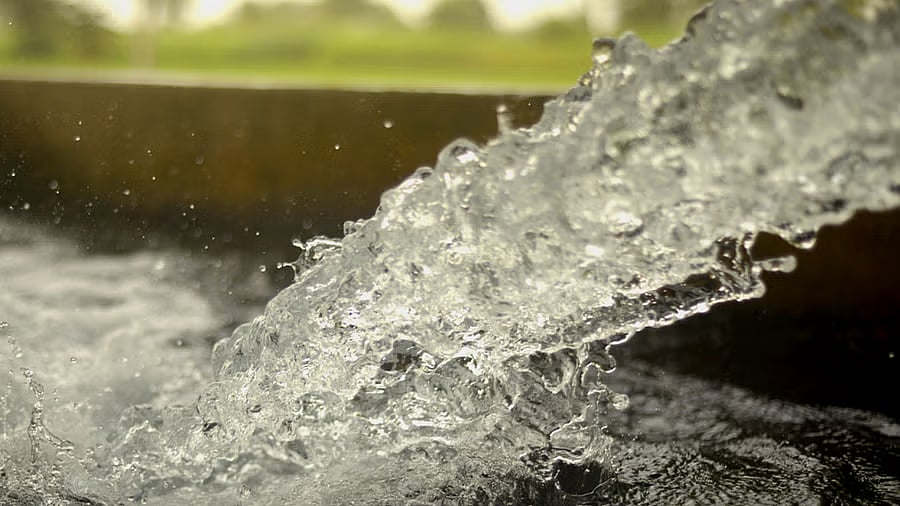
Representative image of water flowing.
Credit: iStock Photo
New Delhi: North India has been losing over 700 thousand million cubic ft of water every year in the last two decades, making it one of the global hotspots for the loss of terrestrial water storage, an international team of scientists has found using US satellite data.
Agriculturally crucial Punjab, Haryana, Uttarakhand, Uttar Pradesh, Bihar and West Bengal, along with Rajasthan and a few North Eastern states have been losing the ground water at an unprecedented rate, the scientists said, adding that the monsoon rain was inadequate to make up for the loss.
The revelation is part of a new satellite-based analysis of global freshwater storage over the last two decades that shows every continent has experienced unprecedented drying since 2002.
“India has lost about 15,400 tmcft of water since 2002. The biggest losses are seen in Rajasthan, Uttar Pradesh, Uttarakhand, Haryana, Himachal Pradesh, Punjab, Arunachal Pradesh, and Bihar. The total volume of losses from these states exceed 800 tmcft per year,” said Hrishikesh Chandanpurkar, first author of the study from Arizona State University.
About 50 per cent of the loss is from the glaciers and the remaining 50 per cent is from human activities and the changing climate. The magnitude of the drying regions far exceeds that from the glaciers.
The biggest loss has been recorded in Ganga-Brahmaputra basin and Indus basin totalling a loss of over 370 tmcft per year.
“The loss over north-west India stems primarily from groundwater depletion. This has consistently been the case since the past 22 years - when GRACE (NASA satellite) data was available,” Chandanpurkar told DH.
The researchers from the USA, India, Saudi Arabia and South Korea used data from Gravity Recovery and Climate Experience (GRACE) and GRACE Follow-On missions to assess the ground water situations across the globe.
“We find that the continents (all land excluding Greenland and Antarctica) have undergone unprecedented rates of drying and that the continental areas experiencing drying are increasing by about twice the size of California each year,” the researchers reported in a recent issue of Science Advances.
The rapid expansion of dry areas has resulted in the emergence of “mega-drying” regions by interlinking of previously known drying hot spots.
While most of the world’s dry areas continue to get drier and its wet areas continue to get wetter, dry areas are drying at a faster rate than wet areas are wetting. At the same time, the area experiencing drying has increased, while the area experiencing wetting has decreased.
Can't the monsoon rain make up for the loss? “Not at the rate at which the terrestrial water storage is declining in the region,” said Chandanpurkar, noting that the gap between water loss and left-over freshwater post rainfall was too high to compensate for the loss.
“At present, over pumping groundwater is the largest contributor to rates of TWS decline in drying regions, significantly amplifying the impacts of increasing temperature, aridification, and extreme drought events. In many places where groundwater is being depleted, it will not be replenished on human timescales," the scientists reported.
